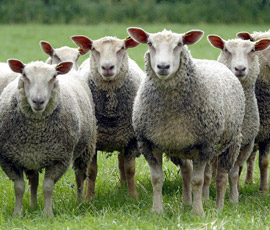Schmallenberg cases found in Lincs and Leics

The Schmallenberg virus continues to spread with two further counties hit and a rise in the number of farms infected, to 145.
Statistics released by the Animal Health and Veterinary Laboratories Agency on 9 March show that cases have been reported on farms in Leicestershire and Lincolnshire for the first time.
The increase in identified cases marks a further sharp rise from 121 on Monday 5 March to 145 just five days later.
Nine of the positive cases have been diagnosed in cattle, 136 in sheep, and none to date in other species.
Counties in the far south and east of England remain the hardest hit. Kent (28 farms) and East Sussex (25 farms) account for more than a third of the total. The pattern backs up the theory that the infection stems from wind-borne midges which carried the virus from the continent last summer.
Phil Stocker, chief executive of the National Sheep Association, said it was important that sheep farmers continued to report any suspicious cases.
“Cases of the Schmallenberg virus are now appearing in different parts of the country, so it is especially important that farmers continue to report cases so that we can build up an accurate picture of where the virus is spreading,” he said.
Mr Stocker said farmers were feeling resigned to getting the virus in their sheep, if they had not already had confirmed cases.
Most sheep farmers with confirmed cases were experiencing relatively low production losses that were not too dissimilar to losses from campylobacteriosis or toxoplasmosis, he said.
But he added: “Farmers and sheep farmers are a fairly resilient bunch and they will work through this.”
Joanne Pugh, assistant director of the National Beef Association, said farmers must remain alert and report any signs of the virus to their vets.
“The disease appears mostly to be affecting sheep, but that doesn’t mean it’s not affecting cattle,” she said.
“There are still very few cattle cases, but we would suggest that the lower figures are because we are not yet into the full thrust of the calving season yet.”
The map below shows all the UK cases of Schmallenberg (9 March). You can view the number of cases in each county by clicking on the markers. More about the disease can be found on our dedicated schmallenberg page.
View Schmallenberg in a full screen map
